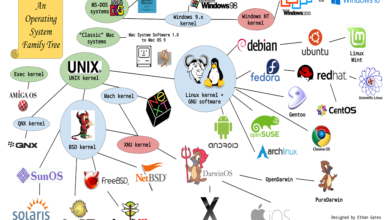
Introduction of Best Energy Affordability Program
- – Understanding the need for Energy Affordability Programs
- – The impact of energy costs on communities
Key Components of Energy Affordability Programs
- – Eligibility criteria and application process
- – Financial assistance and subsidies
- – Energy-efficient improvements and programs
Success Stories
- – Highlighting the positive outcomes of Energy Affordability Programs
- – Real-world examples of communities benefiting from these programs
-
Government Initiatives
- – The role of government in implementing Energy Affordability Programs
- – Policy and regulation support for affordable energy
Challenges and Solutions
- – Identifying challenges in running Energy Affordability Programs
- – Strategies to overcome obstacles and ensure program effectiveness
Empowering Communities
- – Education and awareness campaigns
- – Encouraging energy conservation and responsible consumption
The Future of Energy Affordability Programs
- – Advancements in program design and implementation
- – Expanding the reach and impact of these initiatives
Conclusion
- – Recap of the importance of Energy Affordability Programs
- – The ongoing commitment to making energy accessible and affordable for all
Understanding the Significance of Energy Affordability Programs
Access to affordable energy is a basic need for people and communities in the modern world. Our dwellings are powered by energy, which also powers our industry and propels technological innovation. electricity poverty and other forms of financial hardship can result from the high cost of electricity for a lot of people. Energy Affordability Programs fill this gap by acting as a crucial link to guarantee that everyone has access to cost-effective and dependable energy sources. For more information click Here
What Are Energy Affordability Programs?
**Energy Affordability Programs**
Are programs launched by authorities, utilities, and nonprofits with the main objective of lowering energy costs for low-income households and vulnerable communities? These initiatives strive to ensure that everyone can access energy, regardless of their financial condition, and solve the economic and social issues brought on by high energy prices.
Key Components of Energy Affordability Programs
1. Eligibility Criteria and Application Process
Energy Affordability Programs typically have specific eligibility criteria to identify individuals or households in need of assistance. These criteria may include income thresholds, family size, and vulnerability factors. Applicants can apply for program benefits through a straightforward application process, often online or through local assistance offices.
2. Financial Assistance and Subsidies
One of the fundamental pillars of these groups is financial aid. Low-income households receive financial aid to help with their energy expenditures. This can come in the form of direct subsidies that pay for a portion of the program’s energy costs or energy bill credits that reduce the overall cost of energy for qualified participants.
3. Energy-Efficiency Improvements and Programs
To promote long-term affordability and sustainability, many Energy Affordability Programs invest in energy-saving improvements and initiatives. These may include providing energy-efficient appliances, weatherization services, and education on energy conservation. By helping participants reduce their energy consumption, these programs contribute to both cost savings and environmental benefits.
Success Stories: Transforming Lives through Energy Affordability Programs
The positive impact of Energy Affordability Programs cannot be understated. They have helped countless individuals and families break free from the cycle of energy poverty. Real-world success stories showcase how these programs have made a tangible difference:
1. Keeping Homes Warm in Winter
Low-income families frequently struggle to keep their houses warm in areas with severe winters. These households can now afford heating during the colder months thanks to energy affordability programs, ensuring a secure and comfortable living environment.
2. Empowering Communities
By providing financial relief and energy-efficient upgrades, these programs empower communities to take control of their energy usage. Participants learn about energy conservation, which not only reduces costs but also contributes to sustainability efforts.
Government Initiatives: Supporting Energy Affordability
The Energy Affordability Program’s effectiveness depends on government cooperation. In order for these projects to succeed, a regulatory environment that is created by policymakers is essential. These initiatives are made sustainable and continue to benefit their intended recipients thanks to government-sponsored subsidies and financial incentives.
Challenges and Solutions
While Energy Affordability Programs have achieved significant success, they do face challenges. Limited funding, administrative complexities, and the need for continuous outreach are some of the hurdles programs may encounter. However, creative approaches and collaborations with the business sector can assist in overcoming these challenges and guarantee that energy prices stay fair for everyone.
Community empowerment for a sustainable future
In addition to providing financial relief, Energy Affordability Programs often include education and awareness campaigns. These initiatives empower communities to adopt responsible energy consumption practices, reducing waste and minimizing their environmental footprint.
The Future of Energy Affordability Programs
As technology advances and society’s awareness of energy conservation grows, the future of Energy Affordability Programs holds promising developments. These programs will likely evolve to incorporate smart technologies, renewable energy solutions, and more comprehensive support systems.
Conclusion
Programs OF Energy Affordability Program: Bridging the Energy Gap to make energy more affordable is essential for maintaining the status quo of energy as a fundamental human right. They help low-income households cope with high energy expenses and work for a more just and sustainable energy future. As we look to the future, the dedication to ensuring that energy is available and cheap for everyone continues to be a pillar of a just and productive society.







pingback
pingback